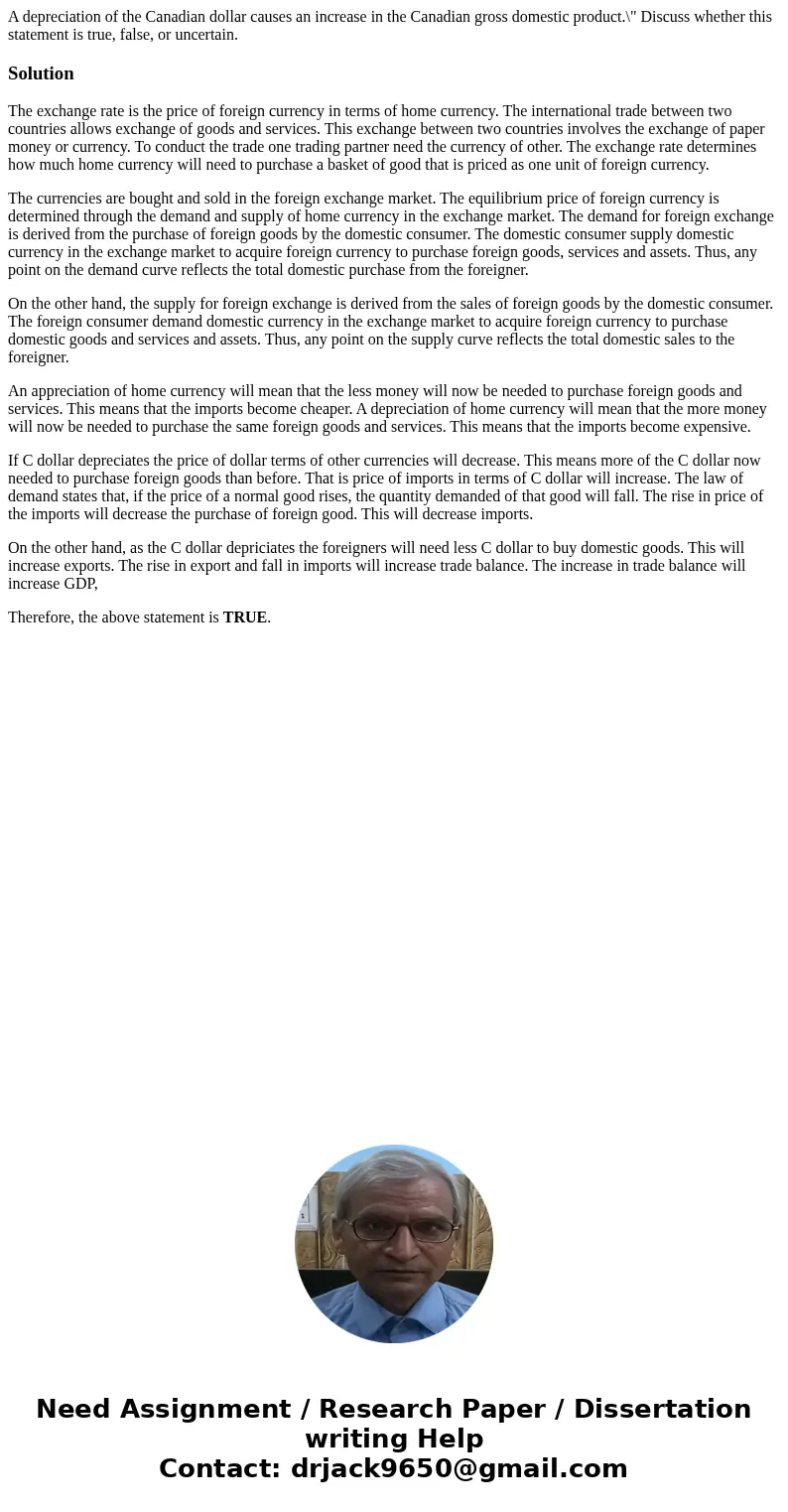A depreciation of the Canadian dollar causes an increase in
Solution
The exchange rate is the price of foreign currency in terms of home currency. The international trade between two countries allows exchange of goods and services. This exchange between two countries involves the exchange of paper money or currency. To conduct the trade one trading partner need the currency of other. The exchange rate determines how much home currency will need to purchase a basket of good that is priced as one unit of foreign currency.
The currencies are bought and sold in the foreign exchange market. The equilibrium price of foreign currency is determined through the demand and supply of home currency in the exchange market. The demand for foreign exchange is derived from the purchase of foreign goods by the domestic consumer. The domestic consumer supply domestic currency in the exchange market to acquire foreign currency to purchase foreign goods, services and assets. Thus, any point on the demand curve reflects the total domestic purchase from the foreigner.
On the other hand, the supply for foreign exchange is derived from the sales of foreign goods by the domestic consumer. The foreign consumer demand domestic currency in the exchange market to acquire foreign currency to purchase domestic goods and services and assets. Thus, any point on the supply curve reflects the total domestic sales to the foreigner.
An appreciation of home currency will mean that the less money will now be needed to purchase foreign goods and services. This means that the imports become cheaper. A depreciation of home currency will mean that the more money will now be needed to purchase the same foreign goods and services. This means that the imports become expensive.
If C dollar depreciates the price of dollar terms of other currencies will decrease. This means more of the C dollar now needed to purchase foreign goods than before. That is price of imports in terms of C dollar will increase. The law of demand states that, if the price of a normal good rises, the quantity demanded of that good will fall. The rise in price of the imports will decrease the purchase of foreign good. This will decrease imports.
On the other hand, as the C dollar depriciates the foreigners will need less C dollar to buy domestic goods. This will increase exports. The rise in export and fall in imports will increase trade balance. The increase in trade balance will increase GDP,
Therefore, the above statement is TRUE.

 Homework Sourse
Homework Sourse